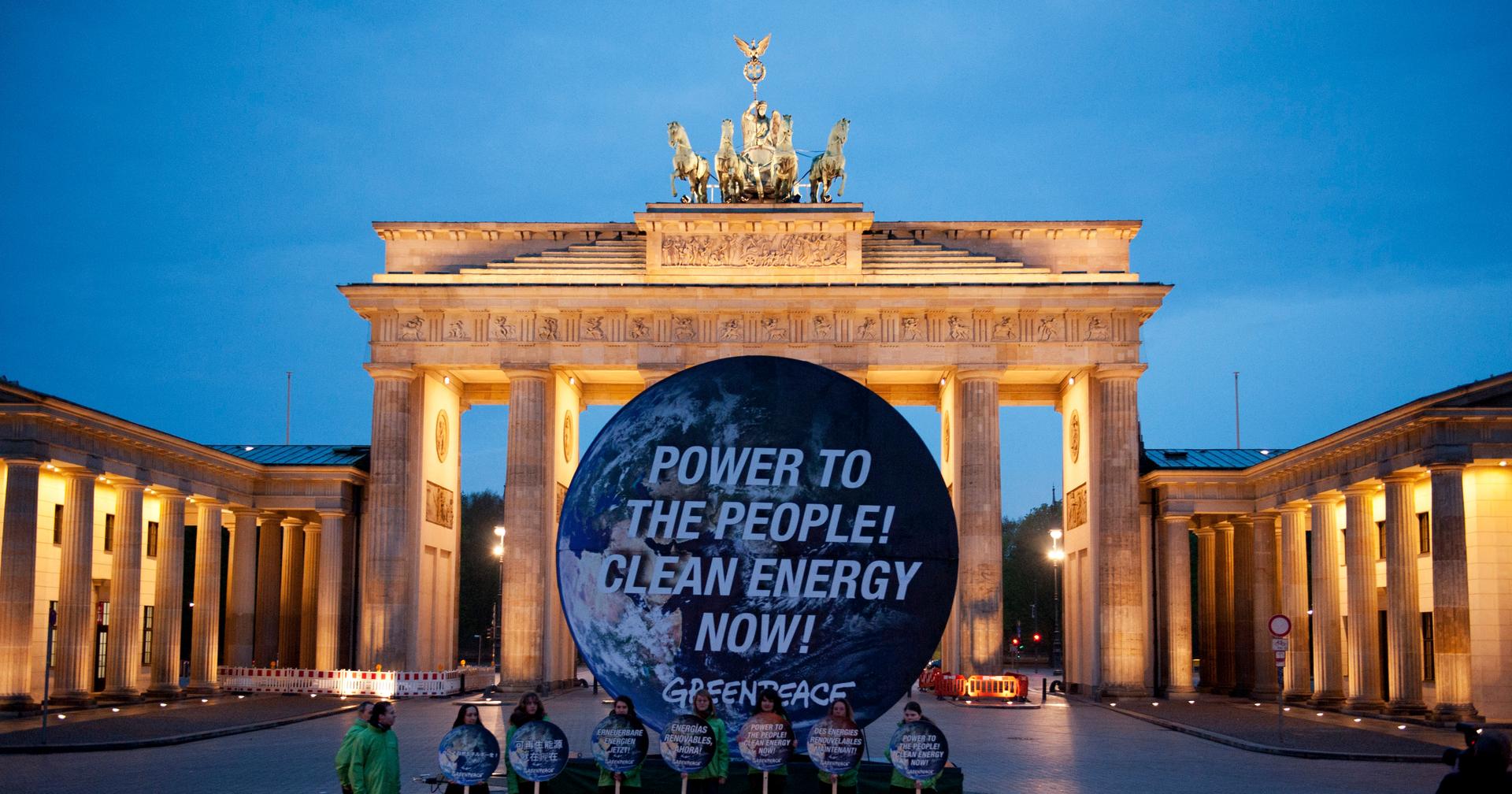In the latest UN climate change report, scientists offer us a glimmer of hope — if we act fast
Members of environmental activist group Greenpeace pose in front of the Brandenburg Gate in Berlin where members of the Intergovernmental Panel on Climate Change (IPCC) Working Group III were finishing a summary for policymakers.
Climate scientists have warned that we have been digging ourselves into a very deep and dark hole. But the third part of a report from the United Nations' Intergovernmental Panel on Climate Change (IPCC) offers much more than dire warnings.
In fact, the authors of the newest installment say there's still reason for hope, but only if the world acts quickly and decisively.
The 33-page summary for policymakers was released in Berlin over the weekend. To avoid the worst impacts of climate change, scientists say greenhouse gas emissions need to be cut 40 to 70 percent from 2010 levels in the next 30-40 years.
Among the report’s 235 authors is Sivan Kartha, a senior scientist with the Stockholm Environment Institute's US Center in Somerville, Massachusetts.
“There’s no single techno-fix, there’s no silver bullet, but there is ‘silver birdshot' — what we can do in industry, what we can do in buildings, what we can do in transport,” Kartha says. “And moreover, it is an opportunity for employment. Making efficient things and making them efficiently generally creates more jobs than digging resources out of the ground and burning them.”
The report says the cost of keeping global warming in check is “relatively modest,” but only if the world acts swiftly. An ambitious plan to slow climate change would trim annual worldwide economic growth by only 0.06 percent. With no extra efforts, worldwide temperatures are on pace to rise between 6.6 and 8.6 degrees over pre-industrial times by 2100.
Kartha says one area that can quickly be improved upon is energy efficiency within buildings — big fixes, not just caulking windows or adding insulation.
“Carefully and thoughtfully thinking of the whole building as a system. How do windows interact with the heating system? And how things vary across the seasons when you need cooling sometimes and heating sometimes.”
He said there have already been impressive gains with buildings across parts of Europe and Canada, and those lessons can be translated to the US — where building codes haven’t been as efficient — or to the developing world, where cities are still being built.
Kartha says such near-term technical improvements can help in the short term, and they tend to have snowballing effects.
“We tend to think of changes we need to make, whether they’re changes to our technical systems or changes to our behavior, as sacrifices we’d rather not make," he says. "But one of the really important points is that business as usual just isn’t an option — doing nothing just isn’t an option.”
But he has hope.
"The ability of societies to change when it really becomes necessary has been proven to be pretty phenomenal and even inspiring."
Climate scientists have warned that we have been digging ourselves into a very deep and dark hole. But the third part of a report from the United Nations' Intergovernmental Panel on Climate Change (IPCC) offers much more than dire warnings.
In fact, the authors of the newest installment say there's still reason for hope, but only if the world acts quickly and decisively.
The 33-page summary for policymakers was released in Berlin over the weekend. To avoid the worst impacts of climate change, scientists say greenhouse gas emissions need to be cut 40 to 70 percent from 2010 levels in the next 30-40 years.
Among the report’s 235 authors is Sivan Kartha, a senior scientist with the Stockholm Environment Institute's US Center in Somerville, Massachusetts.
“There’s no single techno-fix, there’s no silver bullet, but there is ‘silver birdshot' — what we can do in industry, what we can do in buildings, what we can do in transport,” Kartha says. “And moreover, it is an opportunity for employment. Making efficient things and making them efficiently generally creates more jobs than digging resources out of the ground and burning them.”
The report says the cost of keeping global warming in check is “relatively modest,” but only if the world acts swiftly. An ambitious plan to slow climate change would trim annual worldwide economic growth by only 0.06 percent. With no extra efforts, worldwide temperatures are on pace to rise between 6.6 and 8.6 degrees over pre-industrial times by 2100.
Kartha says one area that can quickly be improved upon is energy efficiency within buildings — big fixes, not just caulking windows or adding insulation.
“Carefully and thoughtfully thinking of the whole building as a system. How do windows interact with the heating system? And how things vary across the seasons when you need cooling sometimes and heating sometimes.”
He said there have already been impressive gains with buildings across parts of Europe and Canada, and those lessons can be translated to the US — where building codes haven’t been as efficient — or to the developing world, where cities are still being built.
Kartha says such near-term technical improvements can help in the short term, and they tend to have snowballing effects.
“We tend to think of changes we need to make, whether they’re changes to our technical systems or changes to our behavior, as sacrifices we’d rather not make," he says. "But one of the really important points is that business as usual just isn’t an option — doing nothing just isn’t an option.”
But he has hope.
"The ability of societies to change when it really becomes necessary has been proven to be pretty phenomenal and even inspiring."
